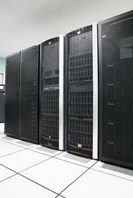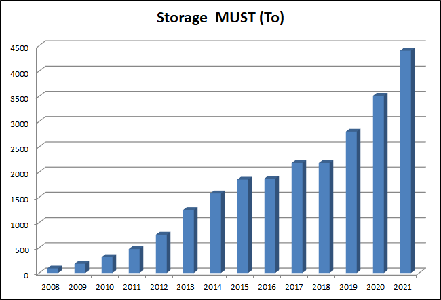Storage
The storage hardware infrastructure is made up of a set of disk servers (more than 4,400 TB) accessible through grid protocols.
The architecture also includes a set of about twenty servers, hosting the services necessary for the proper functioning of MUST. These include storage and jobs management services, monitoring and administration tools for the mesocenter, and MUST deployment and operating tools …

Several types of storage are available:
A shared file system
MUST platform file system allows sharing of workspaces between all the computing servers. This solution allows the users to execute their codes on the platform without modification and without impact on the performance compared to an execution which would be done on their own workstation.
A capacitive file system
Alongside the shared file system, MUST platform offers, through grid protocols (EGI), a large storage space managed by the DPM middleware. Based on standard technologies, this storage space is sized to be able to manage and handle large volumes of data.
An “object” storage system
This virtualized storage system allows the organization and management of data collections, it is currently based on the [iRODS] (https://irods.org/) software.
